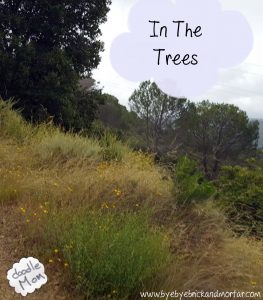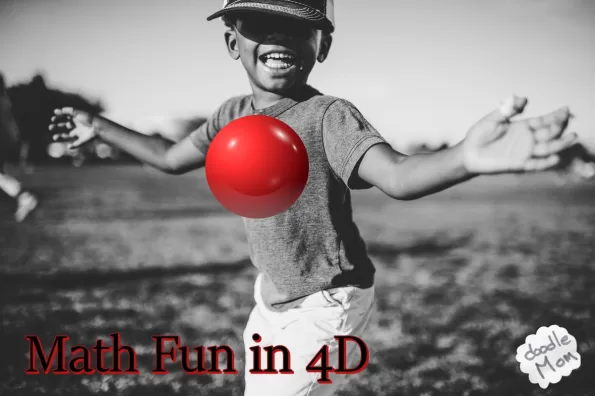 Sometimes learning about science is as simple as going out and experiencing nature. My kids spend a good amount of time in our backyard, a space the Hub has worked from the carefully-manicured lawn that came when we purchased the house so many years ago, to a beautiful and wonderfully wild space full of different flower beds, trees, bushes, and vines. These all vary with the time of year, transforming our wild space from tall and full of fruiting plants in the summer and fall, to low and brimming with flowering bulbs in the winter and spring. We have playthings hidden in our yard as well, tucked amongst the foliage, that provide a framework for my childrens’ imaginations to bloom. On a fine winter day, the two of them might be out in the play cottage, or in the tree house, or possibly playing in the sandbox with a hose. But always they are under the trees.
Sometimes learning about science is as simple as going out and experiencing nature. My kids spend a good amount of time in our backyard, a space the Hub has worked from the carefully-manicured lawn that came when we purchased the house so many years ago, to a beautiful and wonderfully wild space full of different flower beds, trees, bushes, and vines. These all vary with the time of year, transforming our wild space from tall and full of fruiting plants in the summer and fall, to low and brimming with flowering bulbs in the winter and spring. We have playthings hidden in our yard as well, tucked amongst the foliage, that provide a framework for my childrens’ imaginations to bloom. On a fine winter day, the two of them might be out in the play cottage, or in the tree house, or possibly playing in the sandbox with a hose. But always they are under the trees.
We have an absolutely immense old oak tree that shades much of our backyard wild space, from its vantage point in our neighbor’s yard. It is a wonderful plant, towering above my children and protecting them on those hot sunny days of summer. I think it is trees that I love best.
There is a woman who shares my love for trees named Beth Moon (bethmoon.com). She has taken a journey of 14 years to capture the trees she loves best in their native environments. She has published many of the photographs she took of these trees, but the untold story of the peace it must have brought her to undertake this journey is what captures me most.
Science can be in a laboratory, or at a blackboard, but everyone’s soul needs the quiet contemplation of science in the wilds of nature.








